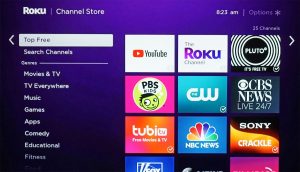Stream at Your Own Risk – Roku’s Massive Data Breach
Mark Walier
Tech Editor
Last week, Roku faced a significant security challenge as 576,000 user accounts were compromised in a “credential stuffing” attack. This breach came shortly after a previous incident in March, which affected 15,000 accounts. Roku, a major player in the streaming hardware industry, has since taken steps to secure user data and strengthen account safety.
Credential stuffing is a cyberattack method where hackers use stolen account credentials to gain unauthorized access to user accounts across different platforms. In Roku’s case, attackers used usernames and passwords leaked from other breaches. This attack was particularly effective due to the common practice of reusing login credentials across multiple services (I’m guilty of this too!). The attackers were able to make unauthorized purchases of Roku products and subscription services by accessing these accounts. In response to these breaches, Roku has reset the passwords for all impacted accounts and directly notified the affected users via email. To further secure accounts against future attacks, Roku has implemented two-factor authentication (2FA) as a mandatory security measure for all users.

For Roku users, this breach serves as a critical reminder of the importance of digital security. Users should check their emails to determine if they have been impacted by the breach. Roku’s response includes a guide to setting up 2FA and advice on creating strong, unique passwords for each online account to enhance security. The implementation of mandatory 2FA is a significant step in protecting user accounts. This security measure requires users to provide two forms of identification before access is granted, making unauthorized access significantly more difficult for attackers.
This incident highlights a growing issue in digital security: the reuse of passwords across multiple platforms. Credential stuffing attacks exploit this vulnerability effectively. To protect against such threats, it is essential not only to use unique passwords for different accounts but also to consider the use of password managers. These tools can help generate and store strong passwords, reducing the burden on users to remember complex passwords for multiple sites. As part of its ongoing response to these security incidents, Roku has also committed to refunding and reversing charges for any unauthorized transactions made during the breach. This proactive approach not only helps mitigate the immediate financial impact on users but also rebuilds trust in the brand.

For college students, understanding and addressing cybersecurity is crucial. We live online and are at a formative stage of building habits that will last a lifetime. Students frequently use online platforms for both educational and entertainment purposes, making them prime targets for such breaches. A security breach like the one Roku experienced can serve as a practical case study in the importance of maintaining online hygiene. College students often manage limited budgets, and unauthorized transactions can be particularly damaging. Furthermore, the habit of securing online accounts protect more sensitive future transactions related to student loans, scholarships, and job applications. By learning from incidents like the Roku hack, students can better understand the real-world implications of digital vulnerabilities and the importance of proactive security measures such as using strong, unique passwords and enabling features like 2FA. So, next time you complain about Seton Hall’s “Duo Security” measures, it’s important to recognize its role in ensuring your Seton Hall data maintains safe.
Contact Mark at mark.walier@student.shu.edu

